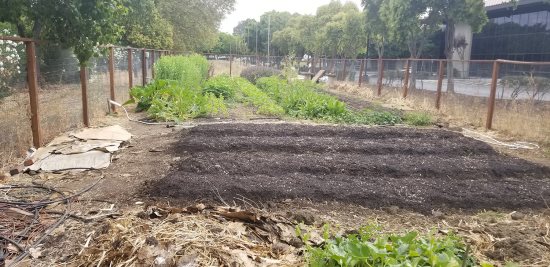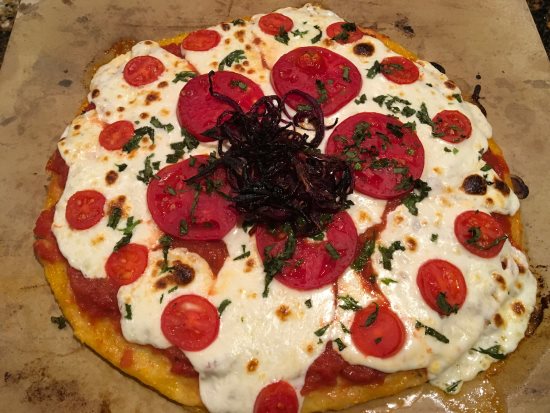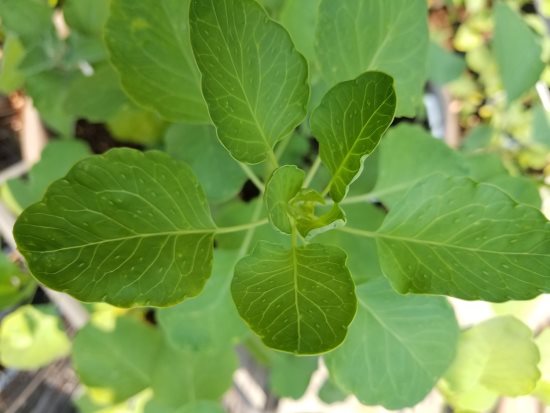 | | | Photos Susie Iventosch | | | | | | Urban farming is a method of localizing the food chain in a way that even surpasses the farmers' market phenomenon. In urban agriculture, food is cultivated and distributed at a specifically local level. According to local urban farmer Kevin Feinstein, (aka Feral Kevin), farmers' markets often bring growers from well outside the immediate area, whereas urban farms can literally be located right inside the city limits of the local town. Generally, these are fairly small plots of land, often located in the earthy spaces between industrial buildings and parking lots, but even more likely in someone's front or back yard. Feinstein began preparing his first urban farm (Feijoa Farms) in the Shadelands Business Park in Walnut Creek about a year ago. Feijoa Farms, approximately 2,000 square feet in size, is situated in an abandoned community garden. When Feinstein arrived, the irrigation system was buried under a thick tangle of weeds, so in addition to a lot of weed whacking, goats were brought in to clear the land.
 He planted his first crops last spring and has been harvesting and selling his produce to local restaurants and individuals in the months since. He has sold his produce to both Reve and Postino restaurants in Lafayette and is now working on his farmers' market certification so he can sell directly to more local customers. Until then, the public can go to the farm and buy from his produce stand, which he opens in the parking lot of Calicraft Brewing Company, just adjacent to the farm. (Be sure to check in with Feinstein prior to your trip, to make sure he'll be there.) Feijoa Farms specializes in exotic basils, arugula, cilantro, wrinkled cress, salad turnips, edible flowers (pansies, violets, calendula and bachelor buttons) and specialty herbs such as French sorrel, among others. But Feinstein's favorite crop, and the one he goes nuts for, is papalo, an ancient Mexican herb that he describes as having an intoxicating flavor.
He planted his first crops last spring and has been harvesting and selling his produce to local restaurants and individuals in the months since. He has sold his produce to both Reve and Postino restaurants in Lafayette and is now working on his farmers' market certification so he can sell directly to more local customers. Until then, the public can go to the farm and buy from his produce stand, which he opens in the parking lot of Calicraft Brewing Company, just adjacent to the farm. (Be sure to check in with Feinstein prior to your trip, to make sure he'll be there.) Feijoa Farms specializes in exotic basils, arugula, cilantro, wrinkled cress, salad turnips, edible flowers (pansies, violets, calendula and bachelor buttons) and specialty herbs such as French sorrel, among others. But Feinstein's favorite crop, and the one he goes nuts for, is papalo, an ancient Mexican herb that he describes as having an intoxicating flavor.
 "Papalo is used where cilantro might be used, but the flavors are not the same," Feinstein reports. "I use it in burgers and Mexican food and I like to use it on pizza. I make pizza with a combination of cornmeal crust, pizza sauce and salsa, tomatoes, cheese and papalo."
"Papalo is used where cilantro might be used, but the flavors are not the same," Feinstein reports. "I use it in burgers and Mexican food and I like to use it on pizza. I make pizza with a combination of cornmeal crust, pizza sauce and salsa, tomatoes, cheese and papalo."
 Some say that the flavor of papalo is somewhere between arugula, cilantro and rue - another herb I've never tasted before. Papalo has a beautiful leaf, with perfectly scalloped edges and is much better adapted to really hot weather compared to cilantro.
Some say that the flavor of papalo is somewhere between arugula, cilantro and rue - another herb I've never tasted before. Papalo has a beautiful leaf, with perfectly scalloped edges and is much better adapted to really hot weather compared to cilantro.
 Unfortunately, the local growing season for papalo is July through early October, so you may have to wait until next summer to try this interesting plant. Feinstein is hoping to still have some on hand for our readers, but it is very close to the end of the local season. He will have many other great crops on hand, in case you miss out on his papalo.
Unfortunately, the local growing season for papalo is July through early October, so you may have to wait until next summer to try this interesting plant. Feinstein is hoping to still have some on hand for our readers, but it is very close to the end of the local season. He will have many other great crops on hand, in case you miss out on his papalo.
 Feinstein models his farming after world-famous urban farming pioneer Curtis Stone of British Columbia, Canada. "He had the idea of localizing the food economy in urban settings," Feinstein noted. "My goal is to revitalize an ultra-local food economy by selling directly from my farm and starting farms in other nearby locations. I eventually would like to have multiple urban farm locations."
Feinstein models his farming after world-famous urban farming pioneer Curtis Stone of British Columbia, Canada. "He had the idea of localizing the food economy in urban settings," Feinstein noted. "My goal is to revitalize an ultra-local food economy by selling directly from my farm and starting farms in other nearby locations. I eventually would like to have multiple urban farm locations."
 While Feinstein plants short rotation crops right now, he would love to grow orchard trees as well as venture into "land race" farming. Land race farming is the process of growing enough of a crop and in such variety as to be able to select the best possible breed for a particular soil and climate. Feinstein credits Joseph Lofthouse of Logan, Utah as a visionary in this field. (Please see the info box for more information on Lofthouse and Land Race farming.)
While Feinstein plants short rotation crops right now, he would love to grow orchard trees as well as venture into "land race" farming. Land race farming is the process of growing enough of a crop and in such variety as to be able to select the best possible breed for a particular soil and climate. Feinstein credits Joseph Lofthouse of Logan, Utah as a visionary in this field. (Please see the info box for more information on Lofthouse and Land Race farming.)
 "This process allows seeds and plants to cross pollinate until they develop a variety that thrives in its environment," he describes. "This is how farming was originally done. I would love to do this with vegetables such as kale."
"This process allows seeds and plants to cross pollinate until they develop a variety that thrives in its environment," he describes. "This is how farming was originally done. I would love to do this with vegetables such as kale."
 Not only is Feinstein in the forefront of this type of farming, but he is an expert on foraging and the author of four books. His latest book, "The Primitive Gardener," is available on Amazon. He has also managed the garden at the Merriewood Children's Center in Lafayette for the past 14 years. This newspaper featured him in an article on March 26, 2014, where we elaborated on his foraging classes, guided tours and the huge variety of edible vegetation he finds while on the trail.
Not only is Feinstein in the forefront of this type of farming, but he is an expert on foraging and the author of four books. His latest book, "The Primitive Gardener," is available on Amazon. He has also managed the garden at the Merriewood Children's Center in Lafayette for the past 14 years. This newspaper featured him in an article on March 26, 2014, where we elaborated on his foraging classes, guided tours and the huge variety of edible vegetation he finds while on the trail.
 For more information on Kevin Feinstein and his upcoming classes and events, please see the gray info box below or email him at: feijoafarms@gmail.com
For more information on Kevin Feinstein and his upcoming classes and events, please see the gray info box below or email him at: feijoafarms@gmail.com
 Feijoa Farms
Feijoa Farms
 2700 Mitchell Drive
2700 Mitchell Drive
 Walnut Creek, CA
Walnut Creek, CA
 Email:feijoafarms@gmail.com; Website: Feralkevin.com
Email:feijoafarms@gmail.com; Website: Feralkevin.com
 For more information about Land Race Farming
For more information about Land Race Farming
 Joseph Lofthouse
Joseph Lofthouse
 http://garden.lofthouse.com/seed-list.phtml
http://garden.lofthouse.com/seed-list.phtml
 Papalo Polenta Pizza
Papalo Polenta Pizza
 (Author's note: I was not able to get to Feijoa Farms in order to try Feinstein's papalo and had to use basil on my pizza instead. Also where Feinstein uses a cornmeal crust from Whole Foods, I used polenta as my crust. This makes the crust totally acceptable for gluten-free diets, and is was delicious. Just don't think it will behave exactly like a pizza crust, because it cannot really be a finger food, but rather served with a fork!)
(Author's note: I was not able to get to Feijoa Farms in order to try Feinstein's papalo and had to use basil on my pizza instead. Also where Feinstein uses a cornmeal crust from Whole Foods, I used polenta as my crust. This makes the crust totally acceptable for gluten-free diets, and is was delicious. Just don't think it will behave exactly like a pizza crust, because it cannot really be a finger food, but rather served with a fork!)
 Polenta
Polenta
 INGREDIENTS
INGREDIENTS
 3 ´ cups water
3 ´ cups water
 1 cup medium grind cornmeal
1 cup medium grind cornmeal
 1 teaspoon salt
1 teaspoon salt
 1 tablespoon olive oil (for baking the crust)
1 tablespoon olive oil (for baking the crust)
 Spray a pizza stone or sturdy baking sheet with cooking spray. Set aside.
Spray a pizza stone or sturdy baking sheet with cooking spray. Set aside.
 Bring the water and salt to a boil in a medium saucepan over medium-high heat. Slowly add cornmeal, whisking all the while, until all of it is added. Turn down heat and continue to cook until polenta begins to thicken, 10-15 minutes, stirring often. When thick, turn polenta out onto the pizza stone and form into a 10-12-inch circle using a spatula. Cool completely, loosely cover with plastic wrap, and refrigerate for at least one hour.
Bring the water and salt to a boil in a medium saucepan over medium-high heat. Slowly add cornmeal, whisking all the while, until all of it is added. Turn down heat and continue to cook until polenta begins to thicken, 10-15 minutes, stirring often. When thick, turn polenta out onto the pizza stone and form into a 10-12-inch circle using a spatula. Cool completely, loosely cover with plastic wrap, and refrigerate for at least one hour.
 When ready to serve, preheat oven to 450 degrees. Remove baking sheet from refrigerator and brush with olive oil. Bake for about 15 minutes, or until the crust begins to get a little bit crisp around the edges.
When ready to serve, preheat oven to 450 degrees. Remove baking sheet from refrigerator and brush with olive oil. Bake for about 15 minutes, or until the crust begins to get a little bit crisp around the edges.
 Remove from the oven and spread pizza sauce (recipe below) over the polenta crust, and top with toppings. Bake at 450 degrees for approximately 15 minutes, more or less, until cheese is melted, bubbly and beginning to brown a bit. Serve piping hot with forks!
Remove from the oven and spread pizza sauce (recipe below) over the polenta crust, and top with toppings. Bake at 450 degrees for approximately 15 minutes, more or less, until cheese is melted, bubbly and beginning to brown a bit. Serve piping hot with forks!
 Pizza Sauce
Pizza Sauce
 Mix together:
Mix together:
 1 cup canned crushed tomatoes
1 cup canned crushed tomatoes
 1 cup of your favorite salsa
1 cup of your favorite salsa
 2 cloves garlic, minced
2 cloves garlic, minced
 Toppings
Toppings
 10-12 ounces fresh mozzarella cheese, thinly sliced
10-12 ounces fresh mozzarella cheese, thinly sliced
 2-3 cups fresh papalo, minced (use 1/2 cup of cilantro or basil if you cannot find papalo)
2-3 cups fresh papalo, minced (use 1/2 cup of cilantro or basil if you cannot find papalo)
 1 red onion, thinly sliced and caramelized
1 red onion, thinly sliced and caramelized
 3 medium tomatoes, thinly sliced
3 medium tomatoes, thinly sliced
 Optional suggested toppings: sliced olives, roasted red bell peppers, mushrooms, grated Parmesan, red pepper flakes, pickled jalapeno peppers .
Optional suggested toppings: sliced olives, roasted red bell peppers, mushrooms, grated Parmesan, red pepper flakes, pickled jalapeno peppers . |



